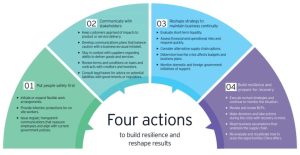UK Online Filing For Bankruptcy
People who declare bankruptcy in the UK should now apply online rather than directly to the court. This document explains how the online application process works and provides useful tips for completing this process.
Getting Started
You can start your bankruptcy application on the official government website. You must use your name, email address and three security issues to set up an online account. Then you will get a 12 digit application number, which can be used to log in at any time, so you don’t have to complete all the work at once.
What do you expect?
When setting up an account, you will first see the application overview page, which is divided into eight parts:
-
personal information
-
task
-
Bank accounts and savings
-
assets
-
The money you owe
-
Income and expenditure
-
legal proceedings
-
Debt records
Provide information
Before completing the previous section, you will not see the next section, so you will not see the details that need to be provided in advance. It is recommended that you collect the following information before you begin to complete your application as soon as possible.
• National insurance number.
• Employment information, including salary and salary details and/or details of all self employment activities in the past 3 years.
• Details and balances of bank and construction association accounts for all accounts in the past two years.
• Information on current assets and obsolete assets in the past 5 years This may become quite complex, but it is usually necessary to provide information on all items in excess of £ 500. For example, real estate, cars, antiques, furniture, etc. You should also list any outstanding and legal damages; stocks, stocks and investments; commercial assets; and the money you owe.
• Letters and statements from creditors and debt collection agencies include information on all legal measures you have taken.
• Information income from monthly sales and expenditure, including welfare, tax deduction, salary or wage payment, annuity income, etc. Spending may be more difficult because everyone’s spending is different each month. With all your monthly and quarterly bills in hand, use your bank and credit card bills to calculate other expenses. For example, food, fuel, clothing, etc.
• Details of all legal claims or litigation(e.g. divorce) that have occurred in the past 5 years.
• Information on all debt solutions(such as debt management or IVA) used in the past 5 years, including previous bankruptcies.
What happens next?
Once all the necessary information has been completed and the bankruptcy fee(currently payable in instalments) has been paid, the application can be submitted. The Judges’ Office will review this and contact you if you need more information. You should receive a reply within a few days.
You can confirm the judge’s decision by email. If the bankruptcy order has taken effect, you can log in to your online account to confirm.
Tips and hints
• If you don’t have a computer, you can usually use one in the regional library for a small fee.
• If you are unable to pay the bankruptcy expenses, you can apply for a subsidy on the Turn2us website.
• Make every effort to provide complete, honest and accurate information. Concealing or deliberately providing false information in the bankruptcy application is a criminal offence, including concealing assets.
• However, you may not be able to provide details, such as the exact date of opening a bank account. Be as accurate as possible.
• Don’t worry if you really forget about debt. Once the bankruptcy order is made, it is included in the bankruptcy order. We recommend getting a copy of your credit history. This should list most of your debt and show all debt sold to debt collectors.
• When listing personal items, do not include items owned by others. For example, a car you insured belongs to your spouse.
• Record uncertain grey areas or identify the information to be provided after submitting the application. After the bankruptcy order is issued, these details can be discussed with the Official Receiver during the interview.









